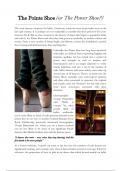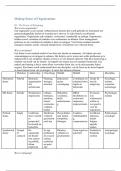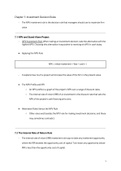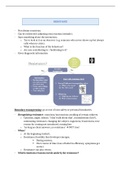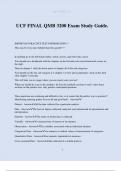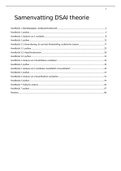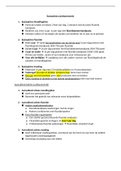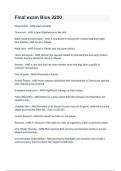7.
Herengracht index: compared prices of the houses over time. Prices have changed a lot.
This is corrected for inflation. Around 1800, economy of NL was lagging behind, houses were very
cheap. Industrial revolution, it took some time till it was really important (it started growing later
than 1850). No economic prosperity, then prices for real estate can be very low. Last decades are
exceptional, prices for real estate were very high.
It can be volatile in the short and long run.
10.
Real estate is very durable. Quality if more or less constant, but prices are fluctuating. Calls your
attention that real estate is durable. Real estate emerges (by new real estate). Real estate changes
over time. History of the city is reflected in the buildings.
13.
Location is the most important aspect of real estate.
14.
House prices are also influenced by the people who live in the neighborhood. But quality and
location is also important.
15.
Voting differences; see differences in housing prices.
Demographic composition also has influence on housing prices.
25.
‘Expect to earn’: so there may be uncertainty.
28.
R = rent
M = maintenance
29.
Infinite sum, then the expression becomes CF/r
31.
Annuity function: Only important formula you need to know
If it will be in the exam, the formula will be given.
36.
Hurdle = kind of minimum return that you would like to have on your investment
39.
Holding period is long means that discount rate is very low.
Leasing real estate is risky.
43.
Difference in rent tells you something about the age of the building.
1
,44.
Cr = going out capitalization rate > may be different from discount rate.
MV = value of property
47.
It shows empirical information about development of house prices. That is new and is important.
New information has been constant over very long time and since 1950’s started to increase
substantially (see graph slide 9).
These authors argue that there was a structural break in some countries. Important information,
because many economist think that there is no particular reason that value increases over time.
Authors show that house prices has increased over time.
49.
House prices were constant, until 1970s. time in which inflation was really high, real estate was then
a kind of safe haven. Put money on bank account loses value, but the real estate doesn’t.
This figure is typical for many countries.
50.
Relate GDP to house prices, this has increased.
51.
Price increase is essentially due to the price of land that has increased and not to construction costs.
Increase of income of households may influence construction costs, but authors don’t give this as an
explanation for increasing house prices.
2
, Lecture 2 & 3 6-4-17
Introduction
Unlisted real estate fund = you pool things together in a fund, so it’s more diversified. Each fund
allocates a number of shares in that fund. That fund is not listed on stock exchange.
Public equity real estate = it’s public, so everyone can buy shares of it.
Very important market is the debt related market. Debt issued by someone who provide a mortgage.
Mortgage is debt covered by real estate.
Pension fund has portfolio of different mortgages. As a portfolio, it becomes very interesting for
institutional investors, because the portfolio generates cash flows. Owning participation in funds of
mortgages, it gives an expected cash flow from homeowners paying back the mortgage. Then
mortgages are not always equal, some are more risky than others. You can put mortgages together.
Some have higher priority than other participants.
Participate in pools of mortgages that are hugely diversified, the risk of one family default on their
mortgage is very small. Then came the credit crisis.
If I’m an institutional investor and want to invest in real estate, but how do you do this? There are
different types of real estate with different structures. Keep in mind, you want to build a diversified
portfolio that makes sense.
Chapter 11
1.
Unlisted funds had been a huge success in history. Because one of the big issues is that it is difficult
to gain diversification in real estate (this is different than from equity, in equity you can diversify very
easy). Invest in real estate, medium sized pension fund, decides to allocate something to real estate.
If you invest this in buildings, you won’t come far with 15 million, because real estate is expensive.
This makes diversification difficult.
Specific risk = risk for a specific company/equity/stock: you can diversify it away. The investor gets
rewarded only for non-diversifiable sources of risk.
Market risk = risk in the market.
Company specific risk = investor won’t be compensated because you can diversify this away.
For real estate it’s exactly the same. If I have the bad luck that I chose the wrong building > terrible
risk.
2.
Why unlisted?
- Illiquidity: you cannot just sell or buy a building easy
- Indirect investment: you can buy participation in a fund pool together diversified
portfolio of assets
- Unlisted real estate funds
o Open ended: instead of each of us have 1 building, we pool it together
o Closed ended: raise money, we buy buildings that are undervalued and renovate
them sell them for higher price. That is a very good business. Typically higher risk
funds. Mostly private equity funds. Private equity is actually a … that raise money …
Purpose private equity: to have a high return on investment, they attract capital and
also use leverage in order to buy more than the initial investment.
3



